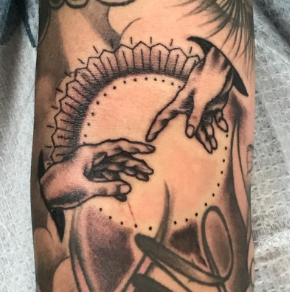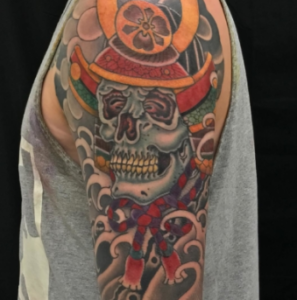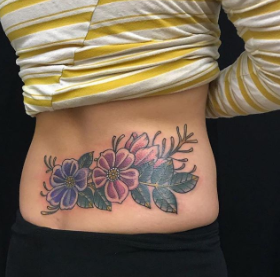Tattooing has long been an integral part of human culture, serving as a form of expression, a rite of passage, and a status marker. In the city of San Diego, the history of tattooing mirrors the city’s evolution from a strategic military hub to a vibrant, culturally diverse metropolis. This journey from sailors to hipsters highlights the transformation of tattooing from a symbol of rebellion to a widely accepted form of personal and artistic expression.
You can then find tattoo shops in San Diego.
What Is Tattooing?
Tattooing is a form of body art that involves inserting ink into the skin’s dermis layer to change its pigment for decorative or symbolic reasons. This ancient practice dates back thousands of years, with evidence found on mummified skin and ancient artifacts worldwide. Tattoos can signify membership, status, religious beliefs, or personal milestones. Modern tattooing uses various styles and techniques, including traditional, realism, watercolor, and tribal. Advances in technology have improved the precision, safety, and color diversity available to artists. Despite its historical stigma, tattooing has gained mainstream acceptance as a form of personal expression and art, celebrated in numerous cultures and communities around the globe.
The Early Days: Sailors and the Military Influence
San Diego’s tattoo history is deeply entwined with its military roots, particularly the Navy. The city’s strategic coastal location made it a pivotal military base, and, by extension, a home for sailors. In the early 20th century, tattoos among sailors were not just common; they were a tradition. These tattoos served various purposes: commemorating milestones, symbolizing experiences, or acting as talismans for protection and luck.

Sailor tattoos often featured nautical themes such as anchors, ships, and swallows, each carrying its own symbolism. Anchors, for example, represented stability and a safe return home, while swallows were believed to ensure a sailor’s safe passage at sea. San Diego’s tattoo shops during this era were filled with these symbols, etching the stories of countless sailors onto their skin.
The Evolution: Tattooing During and Post-War Periods
The post-World War II era marked a significant shift in the tattoo industry in San Diego and across the United States. Soldiers and sailors returning from the war brought back tattoos as souvenirs from their travels, introducing new styles and techniques to the American tattoo landscape. This period blended Eastern and Western tattoo traditions, as American servicemen returned with intricate designs inspired by their time in Japan and the Pacific Islands.
However, the 1950s and 60s also saw tattoos associated with rebellion and non-conformity, pushing the art form to the fringes of society. Despite this, San Diego’s tattoo scene flourished, driven by the city’s growing reputation as a cultural and artistic hub. The counterculture movement of the 1960s and 70s further propelled tattooing into the mainstream, as more people began to see it as a form of personal expression rather than a mark of rebellion.
The Renaissance: The Rise of the Tattoo Artist
The 1980s and 90s witnessed what many consider the renaissance of tattooing in San Diego and globally. Tattoos became more socially acceptable, and the industry saw significant technological advancements, hygiene standards, and artistic techniques. This period marked the rise of the tattoo artist as a respected craftsman, emphasizing custom, original designs that reflected the wearer’s personality and experiences.

San Diego became home to numerous renowned tattoo studios, attracting top talent worldwide. The city’s tattoo artists became known for their creativity, versatility, and commitment to pushing the art form’s boundaries. This era also saw the emergence of tattoo conventions, art shows, and collaborations that integrated tattooing into the mainstream art world.
Today: A Cultural Melting Pot
Today, San Diego’s tattoo scene is as diverse as the city. The city’s studios offer many tattooing techniques, from traditional American and Japanese to modern geometric and watercolor styles. This diversity reflects San Diego’s melting pot of cultures, with artists drawing inspiration from the city’s rich history, coastal landscapes, and vibrant urban culture.
The rise of social media has also played a significant role in the evolution of tattooing in San Diego. Artists and studios use platforms like Instagram to showcase their work, connect with clients, and build their brands. This digital revolution has made tattoo art more accessible than ever, allowing people to discover new styles, follow their favorite artists, and even book appointments online.
Conclusion
The history of tattooing in San Diego is a testament to the art form’s enduring appeal and its ability to adapt and evolve. From its early days as a symbol of identity among sailors to its status today as a mainstream form of personal and artistic expression, tattooing has come a long way. San Diego, with its rich military history, diverse culture, and artistic community, has played a significant role in this evolution.
As we look to the future, it’s clear that tattooing will continue to be an integral part of San Diego’s cultural landscape. With each new generation of artists and enthusiasts, the story of tattooing in the city will continue to unfold, reflecting the ever-changing tapestry of human expression.
